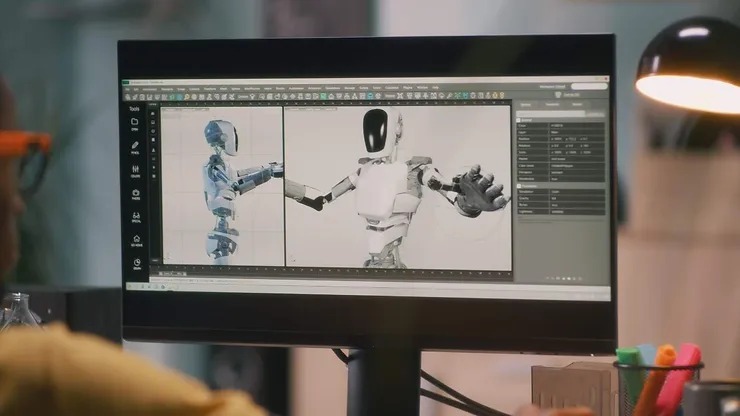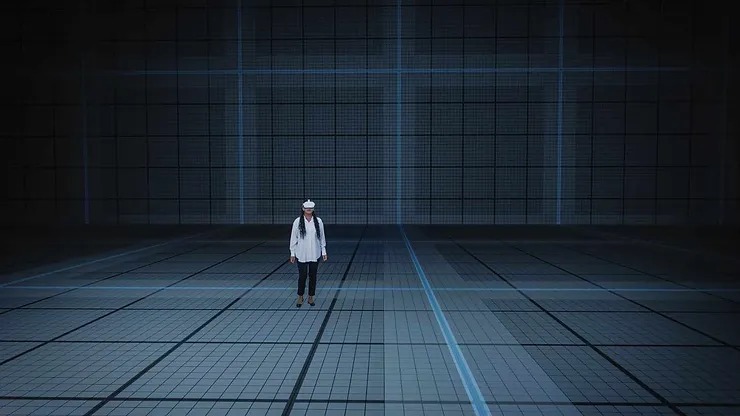Game Design Roles: Building the Worlds We Play In
Game design roles are diversified as the worlds we play. The video game industry generates an incredible amount of revenue each year – in fact, it pulled in $180. 3 billion in 2023 all by itself! But there’s more to this sector than eye-popping graphics and immersive storylines. Behold an entire universe teeming with unseen creativity – plus teamwork. This detailed guide lifts the lid on game development. We’ll explain various jobs that take an idea for a game — something someone has imagined — and bring it to life so people can play it. To do this, professionals use statistics, technical information, diagrams, and normal words anyone can understand!
Find out about:
- The basics of game design
- Something called the Mechanics, Dynamics, and Aesthetics (MDA) Framework.
- Different roles available within game design
- User experience (UX) & user interface (UI) design
It’s amazing how this orchestra of game design roles harmonizes with the final product. After reading about it you’ll be ready for a journey into how skilled teams work together bringing some of the best-loved titles around from ideas disks one can buy at shops…Aimed squarely at budding artists and programmers too; indeed anyone who plays games may well find they start appreciating them even more!
The Foundation of Game Design
Every game, no matter how great the graphics or storylines may be, stands on a base of design principles that have been carefully thought out including diverse game creation roles. These principles are like an architect’s blueprint in that they lay down ( in detail ) what is necessary to keep people entertained for long periods. Below there is an explanation regarding some pieces of these building blocks:

- Things That Keep Them Coming Back: A central element found within all fantastic games is something known as a ‘core gameplay loop’ – and if developers get this right then individuals will want to play more often than not. At its heart, such loops identify actions gamers frequently take (‘core actions’) but furthermore look at what they get back as a result (‘rewards’). When playing many RPGs example one would be ‘exploring/collecting/combatting’ which when combined create a system where by having been somewhere new people find things money can’t buy goods with plus ways using said goods/techniques beat baddies makes them feel good about themselves — so off they go again exploring further!
- Balanced Challenge Reward: Play needs to be difficult enough to reward for doing well otherwise it becomes boring. Research carried out last year, the Entertainment Software Association discovered astonishing 73 percent of players who had been interviewed wanted out title offers tough test abilities – If tasks hand walk park why bother playing? It same goes however them although experience also liked being from time frustratingly hard; after all, nobody enjoys feeling useless point things
- Skilled Manipulation Difficulty: Why do people carry on something when there seems no end in sight? This question lies in sounds boring part area called player motivation – figuring exactly what drives us to engage in activities onwards upwards negotiable bends! Whether thrills competition found shooting games progress they make developing their character role-playing satisfaction felt. Here are some reasons that might come up die trying to finish an arcade game rank worldwide Internet scoreboard points alone intense dislike of another individual whom each top score table addressed him kinds casual remarks including ones surrounding his supposed lack of prowess. Contained heretofore classic put-downs already emblazoned joint T-shirt line effort coat tails parental boasting rights alone.
How can game designers create experiences that resonate more meaningfully with players? By understanding what people want when they play games.
How Game Company Designs Make Money?

When you make a game, you do it because you want people to play it… right? Sure, but in an ideal world, you’d probably also like not to have to live in a cardboard box! This issue becomes more complicated when we consider that making games isn’t just something people do for fun in their spare time, it’s an industry. A very BIG industry. Every year, video game companies generate billions of dollars from sales alone; this doesn’t even include revenue created through things like merchandise sales or in-game advertising. One way game developers try to recoup costs is by ‘monetizing’ their products after release i. e., adding features that allow ongoing income generation and this is always narrowly related to the design.
For example:
- Premium games require an upfront payment to access the entire game.
- Freemium titles are free-to-play but offer in-app purchases or additional content that can be bought at any time; while this model has proven successful within the mobile gaming space, developers must strike a balance so as not to alienate those who choose not to spend money.
- Subscription services give players access to an ever-growing library for a set period (usually month by month) or exclusive perks within particular games.
However, monetization strategies should never get in the way of core gameplay: creating fun things remains the focus.
Deciphering the Game Design Roles Using MDA Frameworks
Think about a game as being like a complex ecosystem – a place where mechanics; dynamics; and aesthetics weave and build off each other to make something cool for players. Viewing these things through the MDA lens can give you powerful ways to understand how they work individually AND together.
- Mechanics: This word means rules! If we’re talking about games, it’s more specific though because they’re also what make everything go. Mechanics are design elements or systems which players have to use whilst playing if that s… movements available such jumping running interacting environments platform game); combat actions like punching kicking special moves used strategically order beat up opponents fighting game). Rules of the system are the most fundamental parts of any game.
- Dynamics: Witness true sorcery in action! What are dynamics, you ask? They’re the things that happen when mechanics start to interact – and the result is gameplay experiences that nobody could have predicted. Take jumping (a mechanic) plus platforms (another mechanic): together these two things might produce an entirely new kind of challenge as you move through a world. Perhaps it will become necessary for players to do some serious thinking about where they jump or how often – should this occur then not only will there be lots more discovery than usual (which is great fun) but also an increased sense of accomplishment related directly to skills developed whilst gaming.
- Aesthetics: Aesthetics refers to the sensory characteristics that influence the emotional experience and general perception of the game. This includes:
- Visuals – The striking graphics, environmental art, and character design that make the game world come alive.
- Audio – Effects sounds that create immersion; atmospheric music or voice acting all of which place players within the game world more deeply by giving it a sense of location.
- Narrative – A storyline unfolding while you play–whether this is spelled out for you explicitly in texts or speech bubbles, or hinted at via things like changes happening over time to an area which suggest something has occurred there recently–can give added emotional depth making gameplay feel richer overall.

Game designers can use this approach of mechanics, dynamics, and aesthetics to create experiences that players will enjoy and find meaningful. When designers understand how these three elements work together, they can design core rules that make for entertaining gameplay; come up with unexpected events that emerge as a result of things gamers try out; and develop an overall look and feel that draws people into their world – making an impression long after someone has finished playing.
The Symphony of Game Design Roles: Career Exploration
In an orchestra, talented individuals with different skills work together to bring a game idea to life. This article looks at some key game design roles in creating games and explores why working on games can be so interesting.
- Game Designers (Architects of Engagement): These individuals take a game concept from idea to something with rules and features that work together. They make sure there is a main way the game is played so people stay interested. By 2033, job opportunities for video game designers are expected to grow by 13%—faster than average for all jobs. But to do this work well you need more than technical skills. Creativity along critical thinking are key requirements as is knowledge about what makes games fun (see our earlier discussion).
- Narrative Designers (Weaving Worlds of Story): When it comes to games with stories, narrative designers call the shots. They don’t just come up with cool missions or characters; they create entire worlds full of gripping plotlines and interactions. To make sure players stay immersed in these made-up realms while battling monsters and whatnot, they also write lots of dialogue and pay close attention to how storytelling elements fit together during gameplay. The job requires more than creativity though: you need a solid grasp of narrative techniques (what makes stories tick), along with writing chops and team-player skills of the wazoo!
- Level Designers (Crafting Playable Worlds): Envision a game divided into stages that are all connected. They concentrate on how players will move through a level (flow), the rate at which they’ll encounter challenges (pacing), how the missions’ main rules can be worked into the setting (integration), and making sure people feel as if they’re exploring as they play. To do this job well, you need to be good at thinking in three dimensions (spatial reasoning), appreciate things like lighting and textures (have an eye for detail), and understand what keeps people interested–or might put them off (player psychology).
- Game Programmers (The Code Architects): These individuals work as engineers, making it possible for design ideas to become real games. Using various programming languages such as Python, Java, or C++, they take concepts from designers and turn them into functional code that works. Among other things, game developers create the basic rules that drive gameplay; build engines that control how objects move around a screen or respond when they collide with each other; some even write complex computer opponents with human-like behavior patterns! If you love solving puzzles and being creative with computers lots are going on here that you’d probably enjoy immensely: plus job prospects couldn’t be better if you’ve got what it takes (clue: an awful lot of brains coupled with bucket loads of perseverance).
- Game Artists (Visual Storytellers): Game artists bring the world of gaming to life with their amazing skills. These professionals have a variety of talents, such as creating 2D or 3D art for games, designing characters that move and interact within these digital worlds, crafting entire landscapes that players explore–plus making things look good while they do it! You need more than just an artistic flair though; being able-bodied in areas like paying close attention to detail along with having strong foundations from art school are equally important if not necessary when working on today’s blockbuster titles.
These are the core game design roles and skill sets one can take to become specialized in certain aspects of game development.
Beyond The Core Roles of Game Development
Game creation roles involve more than just these basic roles. There are other experts whose input is vital for making the game successful overall:
- UI/UX Designers (The User Experience Architects): UI/UX designers, whose job involves designing the user interface (UI) – things like menus, health bars, and mini-maps – as well as user experience (UX) – how it feels to play game and how easy or difficult this is made through design decisions. Their main goal is to create interfaces that are not only easy to use so as not to interrupt gameplay flow but also provide an engaging enough experience; they want players to come back for more! Recent research from Nielsen Norman Group suggests that good UX design could increase user satisfaction by 200%.
- Sound Designers and Composers (The Sonic Architects): Think about a video game that doesn’t have the exciting auditory elements of battle scenes, the atmospheric sounds of a busy virtual town, or a gripping musical score that fits perfectly with on-screen action. Sound designers and composers are the creative brains behind the sonic aspects of gaming. They make sound effects for everything from sword-fighting to dragon-roaring; they produce background noises like tweeting birds or motorbikes revving up; they also write tunes that manipulate players’ feelings – such as tension-building basslines or love-theme flutes. To do well in this field you need more than just a liking for messing around with audio software at home (although that’s a good start!) You must understand how sounds are created digitally; be able to choose or make them to fit specific moods;


- Quality Assurance (QA) Testers (The Game Detectives): Every game has flaws, which is where quality assurance (QA) testers come in. Their main job is to guarantee that when the game reaches the players it is as polished as possible – and this makes them something like detectives too! By playing through each scene meticulously these QA folk can find any bugs or glitches; they also note down anything else affecting gameplay (such as elements that shouldn’t be there at all). A successful title needs these professionals on board: with their sharp eyes for detail plus dogged determination not to let even a single bug slide past unnoticed!
- Data Analysts (The Strategists Behind the Scenes): Data analysts are becoming more and more important in today’s game industry even though they don’t work as traditional developers. Instead of writing code or creating art for games, these professionals study information about how people play to give insights that can help make games better—and figure out what “better” even means! Game designers use findings from data analysts when deciding what levels to add next (or change), what features might be missing from their titles compared with rival products, or even whether an item priced at $5 in an app should instead cost $3-plus taxes.
The above is a mere peek at the many skilled individuals needed to create a game. Team makeups and job titles can change based on how big or small a project is — but whether you’re into design, writing code, or making art (and regardless of whether there are 5 people in total or 500), all successful video games are made by combining efforts from these three groups. It’s worth knowing more about each area if you want to understand why modern games feel so real; alive places! We suggest you read our publishing on the professional journey From Gamer to Creator: Game Development For Teens. You can also go through Game Design and Coding Basics: Master With Fun Activities.
Game Creation Roles Comparison Table
| Role | Avg. Salary (USD) | Learning Curve & Time | Educational Journey & Curriculum | Evaluated Education Investment ($USD) | Skill Applications (Beyond Games) | Deficit? | Future Applications | Other Considerations | Entry-Level Experience | Seniority Levels Experience |
| Game Designer (Architects of Engagement) | $75,000 | Steep (3-5 years) | Game Design degree, portfolio, strong analytical & creative skills | $20,000 – $80,000 (4-year degree or bootcamp) | Simulation design, educational software, user experience design | Yes | Procedural content generation, AI for dynamic narratives | Broad skillset requires an understanding of many game aspects | 1-2 years | 5+ years |
| Narrative Designer (Weaving Worlds of Story) | $80,000 | Moderate (2-4 years) | English/Writing degree, game design courses, storytelling & scriptwriting skills | $10,000 – $60,000 (4-year degree or online courses) | Film/TV writing, transmedia storytelling, marketing & advertising | Yes | Interactive fiction, AI-powered story generation | Strong understanding of player psychology and emotional impact | 1-2 years | 5+ years |
| Level Designer (Crafting Playable Worlds) | $70,000 | Moderate (2-4 years) | Game Design degree, 3D modeling/level editing skills, strong understanding of game mechanics | $15,000 – $70,000 (4-year degree or online courses) | Architecture, virtual reality (VR) world building, simulation design | Yes | Open-world procedural generation, user experience in physical spaces | Strong spatial reasoning and problem-solving skills | 1-2 years | 5+ years |
| Game Programmer (The Code Architects) | $90,000 | Steep (3-5 years) | Computer Science degree, strong programming languages (C++, C#) | $25,000 – $100,000 (4-year degree or bootcamp) | Robotics, software development, web development | Yes (especially for high-end skills) | AI development, game engines in other industries (e.g., simulation) | Requires constant learning to keep up with technological advancements | 2-3 years | 7+ years |
| Game Artist (Visual Storytellers) | $65,000 | Moderate (2-4 years) | Art degree (2D/3D animation, illustration), game art portfolio | $10,000 – $75,000 (4-year degree or art school) | Animation, film/TV production, concept art for other media | Yes (especially for 3D artists) | VR/AR experiences, real-time rendering in other industries | Strong artistic foundation and ability to translate ideas visually | 1-2 years | 5+ years |
| UI/UX Designer (The User Experience Architects) | $85,000 | Moderate (2-4 years) | UI/UX design degree, understanding of user psychology & interaction principles | $20,000 – $80,000 (4-year degree or bootcamp) | Web design, mobile app development, software development | Growing demand | Integration with emerging technologies like AR/VR, user experience in physical products | Strong communication and collaboration skills | 1-2 years | 5+ years |
| Sound Designer & Composer (The Sonic Architects) | $70,000 | Moderate (2-4 years) | Audio design degree, music composition skills (optional) | $15,000 – $70,000 (4-year degree or online courses) | Film/TV production, marketing & advertising, virtual reality (VR) | Yes (especially for high-quality composers) | Procedural audio generation, haptic feedback integration | Strong understanding of how sound affects emotions and gameplay | 1-2 years | 5+ years |
| QA Tester (The Game Detectives) | $55,000 | Gentle (1-2 years) | Game testing certifications (optional) | $0 – $5,000 (Certification or online courses) | Software testing (any industry), quality assurance in other fields | No significant deficit | Automation of repetitive tasks, AI-powered testing tools | Strong attention to detail, methodical approach to problem-solving | Less than 1 year | 3+ years |
| Data Analyst (The Strategists Behind the Scenes) | $80,000 | Moderate (2-4 years) | Statistics/Data Analysis degree, strong analytical & problem-solving skills | $15,000 – $75,000 (4-year degree or online courses) | Business intelligence, marketing analytics, finance | Growing demand | Player behavior prediction, dynamic game adjustments based on data | Strong understanding of data visualization and communication | 1-2 years | 5+ years |
Conclusion: Unveiling the Magic Behind the Games We Love
Have you ever thought about the unseen creators who make your favorite games worth playing? The world of game development is full of talented people working together to bring these digital worlds to life–and this guide has been your exclusive look behind the scenes at all the different jobs that game design roles include.
Imagine yourself as a conductor, leading a talented team of specialists towards a shared vision. Delve deeper into 3D Careers: Chances, Skillsets & What 3D Jobs Pay The Most to discover the financial rewards that await skilled professionals.
M3DS Academy offers a range of programs that can equip you with the specific skills needed to thrive in your chosen role. Are you a budding artist yearning to bring characters to life? We have programs tailored to your passion, just like Game Development Salary & Role Processes: Choose Your Art
This collaborative environment extends beyond artists and programmers. Our resources, like From Gamer to Creator: Game Development For Teens, showcase the journey of aspiring creators, while Game Design Degree and Coding Basics: Fun Approaches provide a springboard for those just starting their exploration.
Want to stay on top of industry trends? Explore our insightful resources like Gaming Insights: Industry Leaders Valuation And Expectations to gain a well-rounded understanding of the field.
No matter your background or Skillset, there’s a place for you in this dynamic industry. Whether you’re a seasoned artist, a coding whiz, or a narrative mastermind, your unique talents can contribute to the symphony of game design.
For even more inspiration, tune into the [M3DS Academy Podcast with Ryan Wong – CEO of Glow where industry leaders share their experiences.
Explore our academy programs to find the right path for you. Our courses offer in-depth training in game development, while our masterclasses provide advanced insights from industry professionals. For more information on how to get started, check out our enrollment and financing options. Dive into the world of game creation and make your mark on the industry! Don’t hesitate anymore. Catch that train on time and join the journey today!!!

